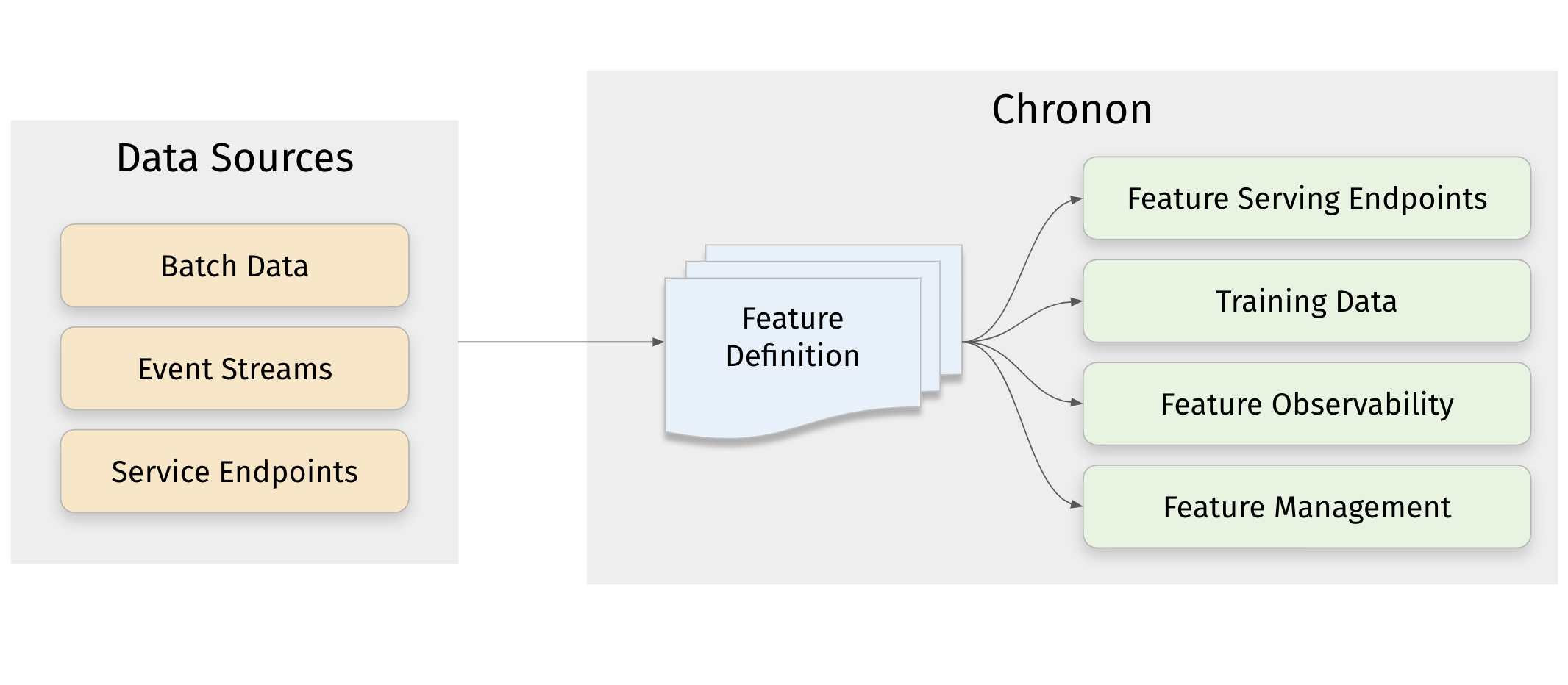What is Chronon?#
Chronon is an open source end-to-end feature platform that allows Machine Learning (ML) teams to easily build, deploy, manage and monitor data pipelines for machine learning.
It’s currently used to power all major ML applications within Airbnb, as well as major use cases at Stripe. Airbnb and Stripe jointly manage and maintain the project, and welcome your usage and contributions!

Key Features#
Consume data from a variety of Sources - event streams, DB table snapshots, change data streams, service endpoints and warehouse tables modeled as either slowly changing dimensions, fact or dimension tables
Produce results both online and offline contexts - Online, as scalable low-latency end-points for feature serving, or offline as hive tables, for generating training data.
Real-time or batch accuracy - You can configure the result to be either Temporal or Snapshot accurate. Temporal refers to updating feature values in real-time in online context and producing point-in-time correct features in the offline context. Snapshot accuracy refers to features being updated once a day at midnight.
Backfill training sets from raw data - without having to wait for months to accumulate feature logs to train your model.
Powerful python API - data source types, freshness and contexts are API level abstractions that you compose with intuitive SQL primitives like group-by, join, select etc., with powerful enhancements.
Automated feature monitoring - auto-generate monitoring pipelines to understand training data quality, measure training-serving skew and monitor feature drift.
Example#
Here is a code example showing what a simple Chronon GroupBy looks like.
This definition starts with purchase events as the raw input source, and creates user level features by aggregating the number of purchases and the purchase value in various windows, using various aggregations. This single definition can be used to automatically create offline datasets, feature serving end-points and data quality monitoring pipelines.
"""
This GroupBy aggregates metrics about a user's previous purchases in various windows.
"""
# This source is raw purchase events. Every time a user makes a purchase, it will be one entry in this source.
source = Source(
events=EventSource(
table="data.purchases", # This points to the log table in the warehouse with historical purchase events, updated in batch daily
topic= "events/purchases", # The streaming source topic that can be listened to for realtime events
query=Query(
selects=select(
user="user_id",
price="purchase_price * (1 - merchant_fee_percent/100)"
), # Select the fields we care about
time_column="ts" # The event time
)
)
)
window_sizes = [Window(length=day, timeUnit=TimeUnit.DAYS) for day in [3, 14, 30]] # Define some window sizes to use below
v1 = GroupBy(
sources=[source],
keys=["user_id"], # We are aggregating by user
online=True,
aggregations=[Aggregation(
input_column="price",
operation=Operation.SUM,
windows=window_sizes
), # The sum of purchases prices
Aggregation(
input_column="price",
operation=Operation.COUNT,
windows=window_sizes
), # The count of purchases
Aggregation(
input_column="price",
operation=Operation.AVERAGE,
windows=window_sizes
), # The average purchases
Aggregation(
input_column="price",
operation=Operation.LAST_K(10),
), # The last 10 purchase prices, collected into a list
], # All aggregations are performed over the window_sizes defined above
)
To run this and other features and see the complete flow from generating training data to online serving, continue along to the Quickstart Tutorial, or for more documentation on how to author and use features, see the Creating Training Data section.
